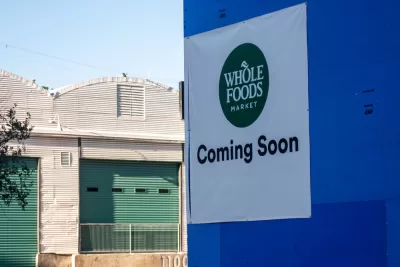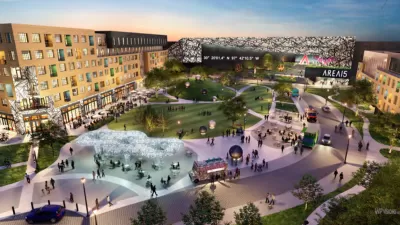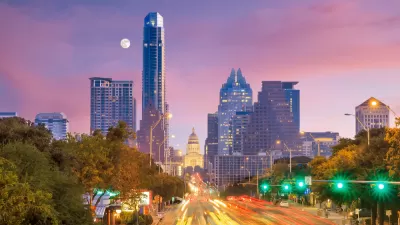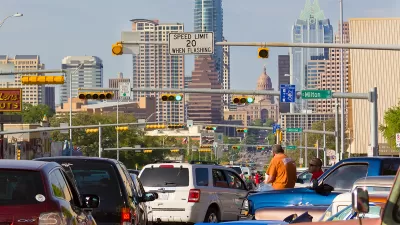The Texas state capital’s “right to return” law was delayed by the pandemic, but Austin is now taking applications for longtime low-income residents to find housing in gentrifying neighborhoods.

“The City of Austin says it will give people from gentrifying neighborhoods priority in the application process for more than two dozen homes it's selling to low-income families,” reports Audrey McGlinchy for KUT.
“This is the first time the city plans to use what it calls a ‘preference policy,’ which was approved by council members in 2018,” according to McGlincy. Planetizen shared news of the new policy in September 2021, when the city identified a development site for the program. The deployment of the law, originally intended for late 2019, was delayed by the pandemic.
“To benefit from the program, people first need to be making less than Austin's family median income; for a single-person household that amounts to $69,250 a year,” according to McGlinchy. “Additionally, people need to prove they've been affected by gentrification or that they have generational ties to the city. That can mean they live or have lived — as far back as 2000 — in a neighborhood in the process of gentrifying; that's the process in which wealthy people move to a historically middle- or low-income neighborhood and housing costs rise.”
A study published in 2018 by researchers from the University of Texas is informing the city’s assessment of gentrification around the city.
More details on the new right to return law and the properties available in this first wave of applications can be found in the source article below.
FULL STORY: Austin says it will sell city-owned property to families affected by gentrification

Montreal Mall to Become 6,000 Housing Units
Place Versailles will be transformed into a mixed-use complex over the next 25 years.

Planetizen Federal Action Tracker
A weekly monitor of how Trump’s orders and actions are impacting planners and planning in America.

DARTSpace Platform Streamlines Dallas TOD Application Process
The Dallas transit agency hopes a shorter permitting timeline will boost transit-oriented development around rail stations.

Study: 4% of Truckers Lack a Valid Commercial License
Over 56% of inspected trucks had other violations.

Chicago Judge Orders Thousands of Accessible Ped Signals
Only 3% of the city's crossing signals are currently accessible to blind pedestrians.

Philadelphia Swaps Car Lanes for Bikeways in Unanimous Vote
The project will transform one of the handful of streets responsible for 80% of the city’s major crashes.
Urban Design for Planners 1: Software Tools
This six-course series explores essential urban design concepts using open source software and equips planners with the tools they need to participate fully in the urban design process.
Planning for Universal Design
Learn the tools for implementing Universal Design in planning regulations.
City of Mt Shasta
City of Camden Redevelopment Agency
City of Astoria
Transportation Research & Education Center (TREC) at Portland State University
US High Speed Rail Association
City of Camden Redevelopment Agency
Municipality of Princeton (NJ)





























